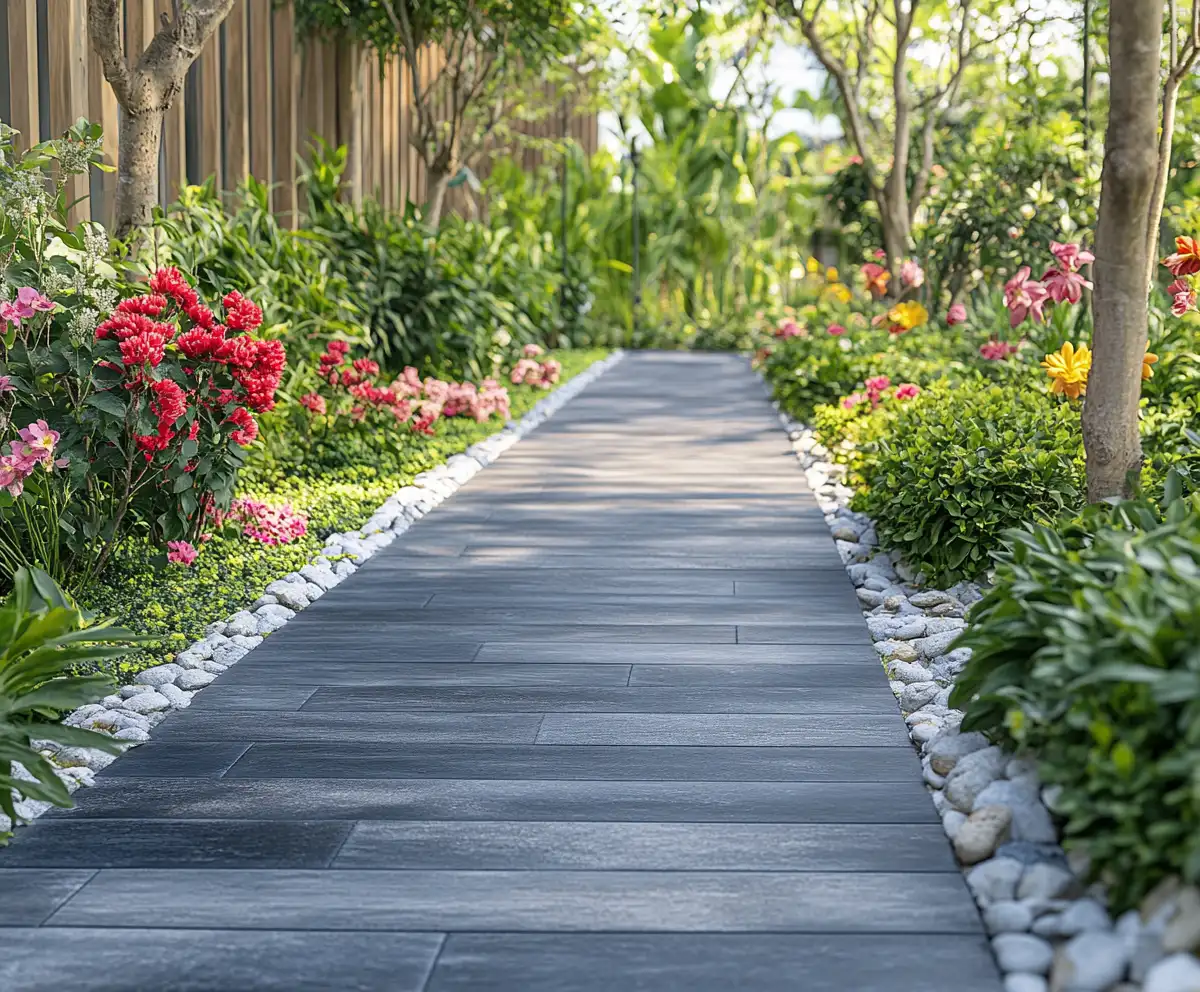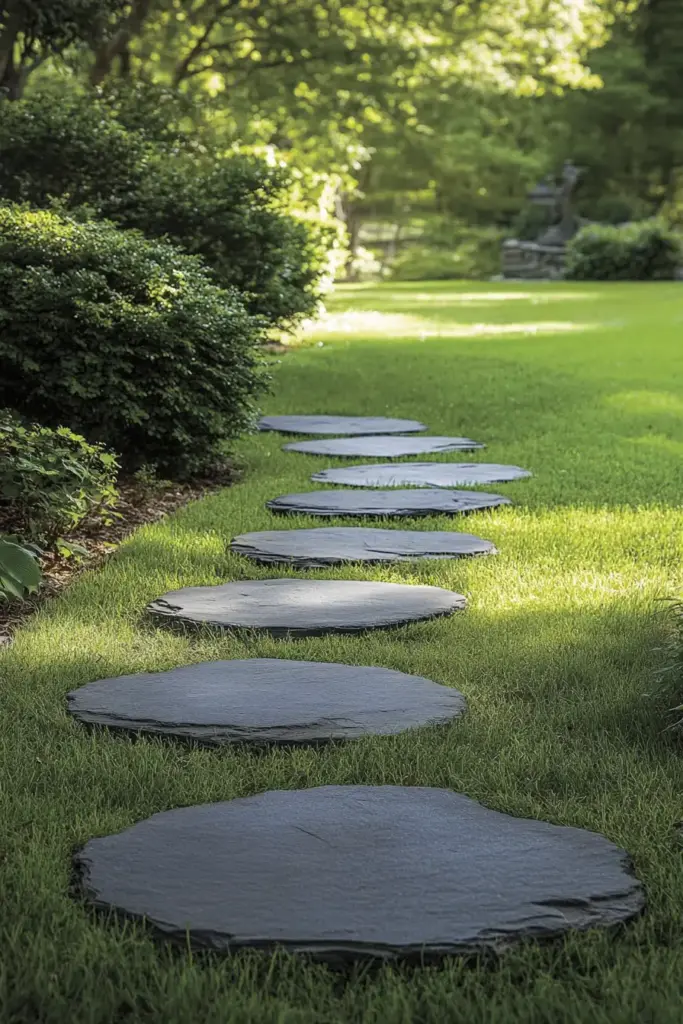Flagstone path ideas can instantly elevate the charm and functionality of any outdoor space. Whether you’re envisioning a whimsical trail winding through your cottage-style garden or a more refined walkway leading to your entryway, flagstone offers unmatched versatility, durability, and a timeless aesthetic. Its natural shapes and earthy tones blend seamlessly with various landscape elements, making it a top choice for DIYers and professionals alike—especially when paired with features like walkable ground covers or rustic rock landscaping.
In this guide, you’ll discover nine inspiring and practical flagstone path ideas—each designed to suit your garden’s personality while boosting both usability and visual appeal.
🌿 Love gardening inspiration? Follow me on Pinterest for bold plant ideas, tips, and seasonal color!
Table of Contents
1) Stone Circle Design
One of the most eye-catching flagstone path ideas is the stone circle design—a layout that not only stands out but also adds a sense of harmony and balance to your landscape. Unlike straight or linear paths, this circular concept invites movement and encourages gathering, making it a perfect fit for patios, garden centers, or transitional spaces.
With flagstone, it’s easy to create circles of varying sizes that can serve both decorative and functional purposes. You can place a fire pit at the center, add a bench or seating stones around the perimeter, or use it as a peaceful meditation spot. The irregular shapes of flagstones naturally contribute to the organic flow of the design.
Why It Works:
- Focal Point: Draws the eye and creates a centerpiece in your yard.
- Flexible Layout: Can be customized to fit large or small spaces.
- Perfect for Seating: Ideal for adding outdoor furniture or cozy nooks.
Pro Tips:
- Choose stones with relatively flat surfaces for safe and comfortable seating.
- Surround the circle with flowering plants or low hedges to soften the edges.
- Use a gravel or mulch base beneath the stones for better drainage and stability.
This is a great option if you want your garden to feel like an intentional and peaceful retreat, while still providing a durable and stylish path.
2) Stepping Stone Mosaic
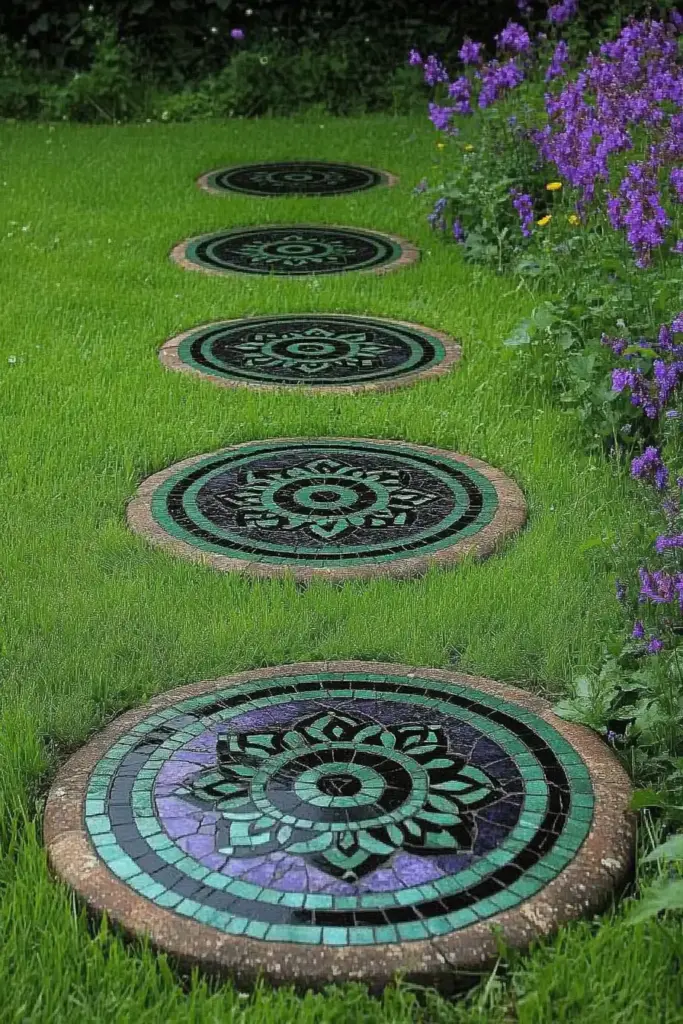
If you’re looking for truly artistic flagstone path ideas, the stepping stone mosaic is a perfect match. This path style blends creativity with functionality, transforming ordinary walkways into captivating pieces of outdoor art. By incorporating materials like colored stones, broken tile, glass, or even recycled ceramics, you can create intricate patterns or bold, abstract designs.
Mosaic flagstone paths are especially appealing in gardens where visual interest matters. Whether you prefer simple, symmetrical motifs or bold, eclectic combinations, this approach allows your personality to shine through. It’s also a favorite among DIY enthusiasts, thanks to its customizability.
Why It Works:
- Highly Customizable: Every mosaic can be uniquely designed to reflect your taste.
- Visual Impact: Offers immediate curb appeal and garden charm.
- Durability: When properly installed, mosaic paths hold up well under foot traffic.
Creative Ideas:
- Use blue and green tones to mimic flowing water in your design.
- Alternate mosaic and plain flagstone pieces for contrast and balance.
- Incorporate personal touches, like initials or symbols, for a signature look.
This path style adds not just color and texture but also a layer of storytelling, making your garden walk more than just a means of getting from point A to B—it becomes a journey in itself.
3) Irregular Flagstone Path

Among the most natural-looking flagstone path ideas is the irregular flagstone path. This design celebrates asymmetry and freeform shapes, offering a relaxed, rustic charm that feels right at home in cottage gardens, woodland settings, or informal landscapes.
Irregular flagstones come in different sizes and contours, allowing for organic layouts that meander through your yard. The gaps between stones can be filled with moss, grass, gravel, or low-growing ground cover, enhancing the earthy, lived-in look.
Why It Works:
- Natural Aesthetic: Mimics the randomness of nature for a harmonious blend.
- Easy Installation: Allows for flexibility in placement and layout.
- Low Maintenance: With proper base prep, these paths are highly durable.
Design Suggestions:
- Pair with native plants and mulch borders for an integrated appearance.
- Use larger stones at curves or path intersections for visual anchors.
- Add solar lights along the edges for nighttime ambiance and safety.
This path style is ideal for those who appreciate a more informal, unstructured look while still achieving a practical and beautiful garden walkway.
4) Random Rock Pattern
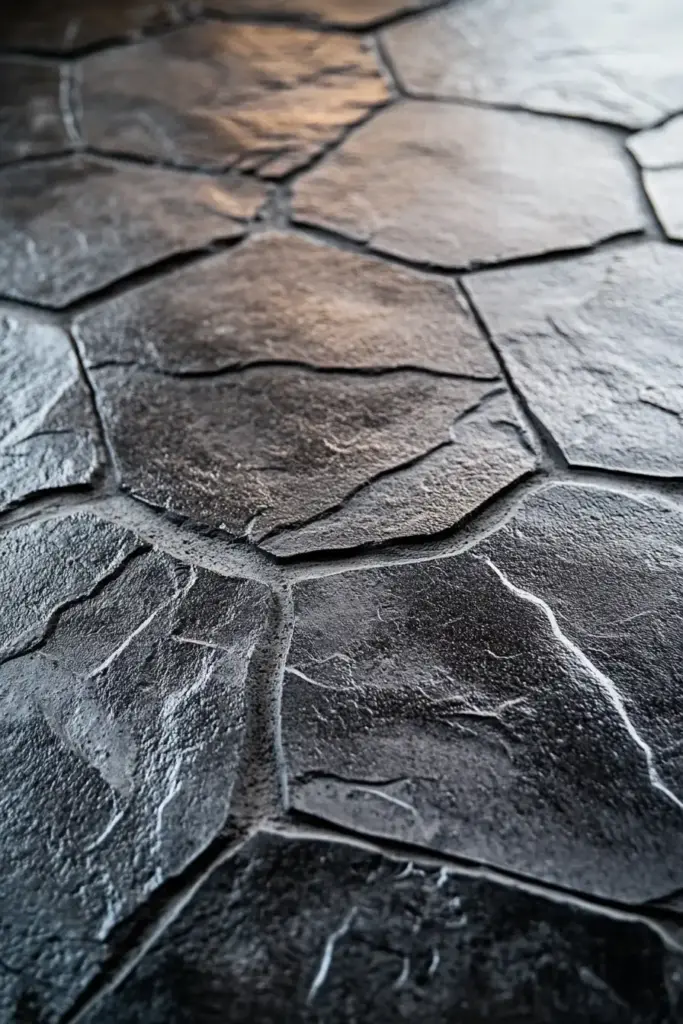
For homeowners seeking more eclectic flagstone path ideas, the random rock pattern delivers both character and utility. This layout blends stones of various shapes and sizes, creating a visually dynamic path that feels spontaneous yet thoughtfully arranged.
Unlike more uniform designs, the random rock approach embraces imperfections and diversity in stone shape. It often works well in gardens with abundant greenery, as the irregular stones naturally blend into lush surroundings. Plus, its varied stone placement allows for excellent drainage, reducing pooling and erosion.
Why It Works:
- Organic Appeal: Mimics natural rock formations found in wild landscapes.
- Drainage-Friendly: Gaps allow water to pass through easily.
- Creative Freedom: Mix and match stone types, textures, and tones.
Smart Tips:
- Use larger, flat stones for main walking surfaces and smaller ones to fill in gaps.
- Mix different stone colors like slate, sandstone, or quartzite for added depth.
- Consider a winding path layout to maximize the natural, relaxed vibe.
Whether you’re designing a forest-inspired escape or a casual backyard trail, this pattern adapts easily to your landscape and delivers a one-of-a-kind result every time.
5) Mixed Material Pathway
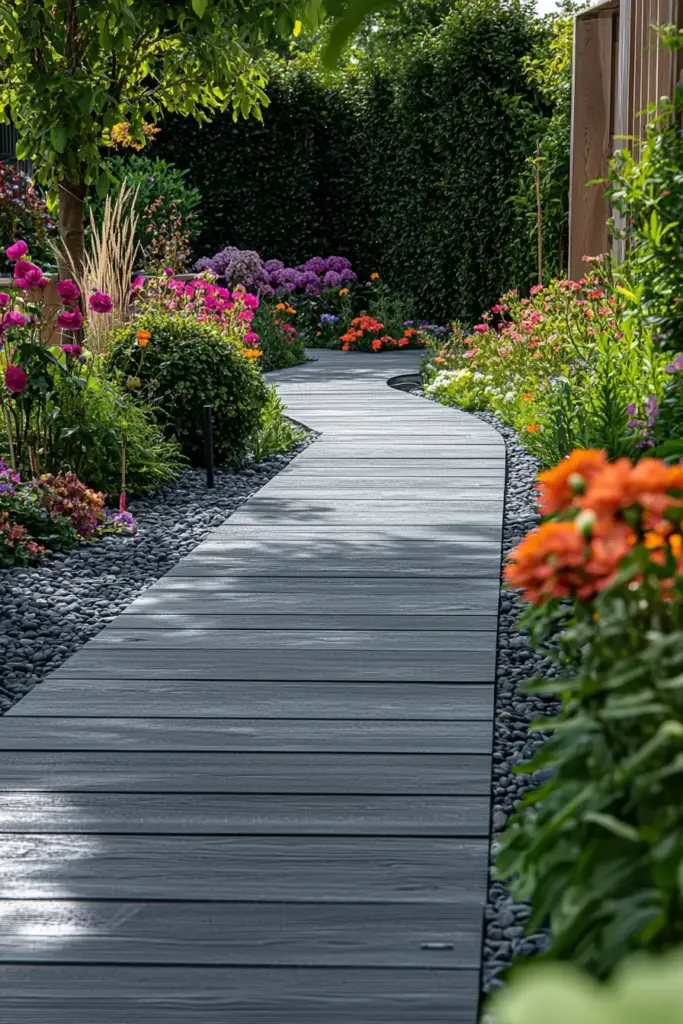
When you’re exploring creative flagstone path ideas, don’t overlook the charm and versatility of a mixed material pathway. This approach combines flagstone with complementary materials like gravel, wood, brick, or pebbles to create a pathway that’s both practical and packed with personality.
Mixed material paths are ideal for those who want to break up visual monotony or incorporate sustainable, reused components. The contrasting textures and tones bring depth to the design, while the variety in materials often enhances durability and weather resistance.
Why It Works:
- Design Versatility: Combines function with artistic flair.
- Improved Durability: Different materials help withstand shifting seasons and foot traffic.
- Budget-Friendly Options: Use reclaimed wood or recycled bricks to lower costs.
Combinations to Try:
- Flagstone + pea gravel for a modern-rustic look.
- Flagstone + wooden planks for a warm, earthy vibe.
- Flagstone + brick edging for a touch of elegance and structure.
This type of path is perfect for DIY enthusiasts or those wanting a standout garden feature that reflects a layered, thoughtful landscape design.
6) Curved Stone Layout
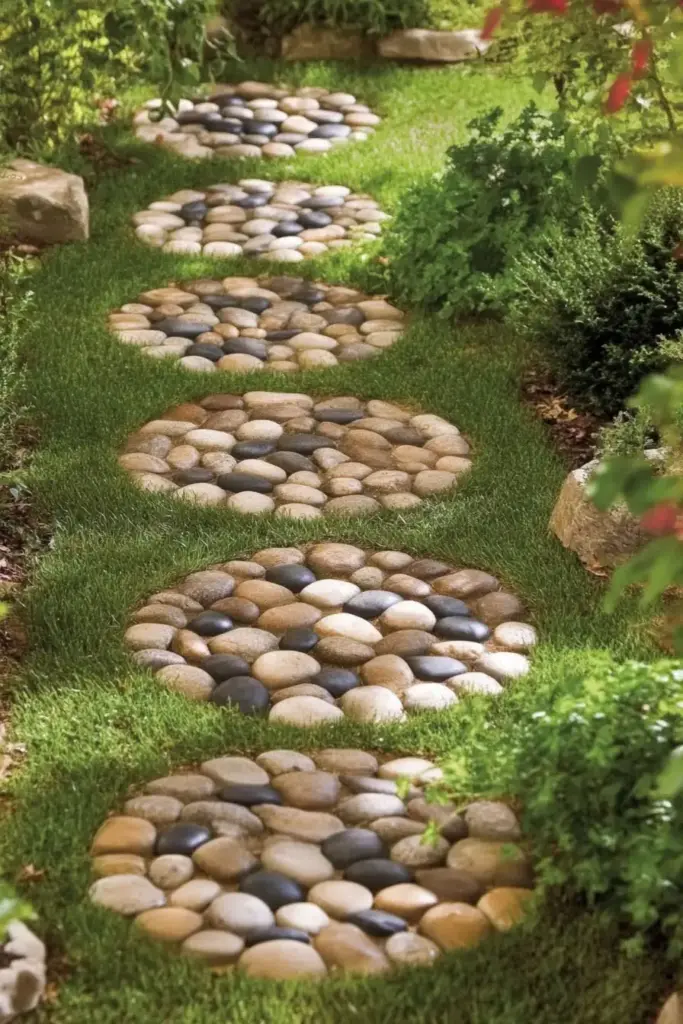
Among the most graceful flagstone path ideas is the curved stone layout, which brings a sense of flow and softness to any outdoor space. Unlike straight walkways that can feel rigid or utilitarian, curved paths follow a more organic route—guiding the eye and the feet naturally through the garden.
Curved flagstone paths are especially effective in larger yards or spaces where you want to create visual movement. They work beautifully alongside flower beds, around trees, or through lawns, helping define different areas without the need for fences or hard boundaries.
Why It Works:
- Inviting Movement: Curves encourage a slow, meandering stroll through the garden.
- Softens the Landscape: Helps break up sharp lines and create a more relaxed atmosphere.
- Functional Design: Can improve drainage and follow the land’s natural contours.
Design Enhancements:
- Border the path with soft ground cover or ornamental grasses.
- Use larger stones on the outer edges to maintain structure and stability.
- Integrate solar or lantern-style lights to highlight the path’s curves at night.
A curved stone layout transforms a basic walkway into an immersive garden experience—ideal for those who want to add rhythm and beauty to their outdoor design.
7) Flagstone with Gravel Fill

One of the most practical and low-maintenance flagstone path ideas is using flagstone with gravel fill. This design combines the sturdy elegance of natural stone with the functionality and flexibility of loose-fill gravel, creating a clean, well-drained walkway that’s easy to install and maintain.
This type of path works well in both formal and informal landscapes. The gravel serves as a buffer between stones, keeping them in place and helping to prevent weed growth. It also promotes excellent drainage, making it ideal for areas prone to heavy rainfall or poor soil permeability.
Why It Works:
- Great Drainage: Gravel allows water to flow freely, reducing puddles and erosion.
- Easy to Install: No need for mortar or cement—just a well-prepared base.
- Low Maintenance: Minimal upkeep and weed control with the right setup.
Gravel Tips:
- Choose pea gravel for a soft, smooth surface underfoot.
- Crushed stone offers more traction and stays compacted better over time.
- Use landscape edging to keep gravel neatly contained.
This design brings together durability, simplicity, and a tidy aesthetic—perfect for homeowners who want a path that’s both beautiful and built to last.
8) Formal Garden Path
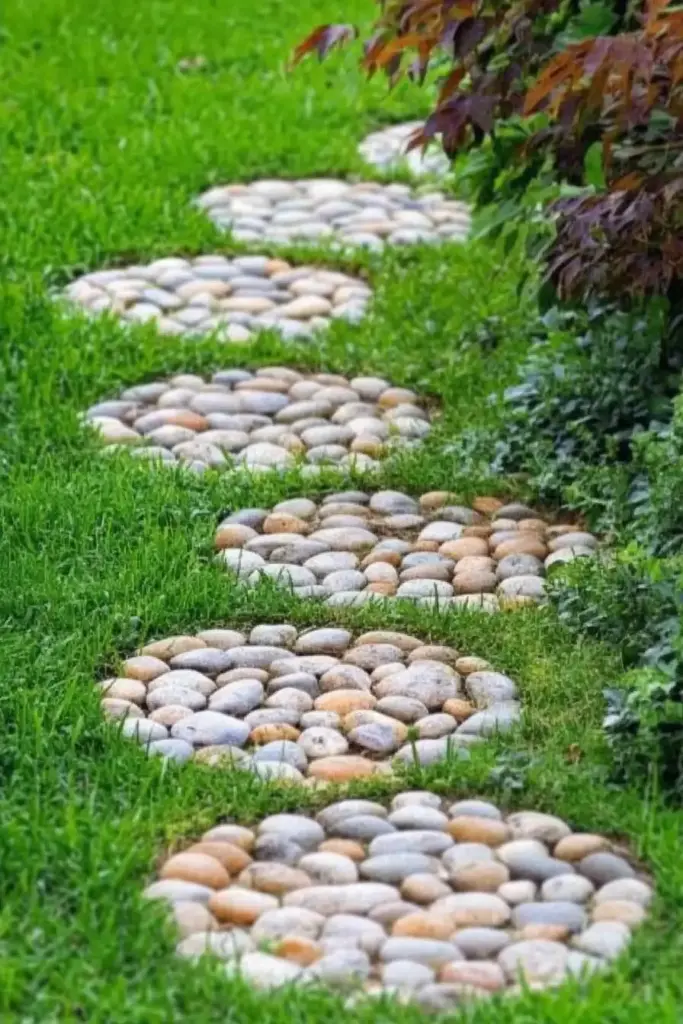
If your landscape leans toward elegance and symmetry, one of the most refined flagstone path ideas to consider is a formal garden path. This style focuses on straight lines, consistent shapes, and structured layouts—often incorporating rectangular or square-cut flagstones for a polished, cohesive appearance.
Formal paths work exceptionally well in front yards, around patios, or in structured garden areas where clarity and direction are desired. Paired with neat hedges, flower borders, or geometric lawn designs, this layout exudes sophistication and timeless charm.
Why It Works:
- Structured Aesthetic: Delivers clean lines and a sense of order.
- Enhances Architecture: Complements symmetrical garden designs and formal landscaping.
- Easy Navigation: Clear, wide walkways are ideal for foot traffic and accessibility.
Design Tips:
- Use uniform flagstone cuts for a balanced, professional look.
- Incorporate brick or metal edging to reinforce the path’s clean shape.
- Add pathway lighting to enhance evening ambiance and improve visibility.
Whether you’re guiding guests to your front door or crafting a garden worthy of afternoon tea, the formal garden path brings a sense of elegance and intentionality to your outdoor space.
9) Flagstone with Ground Cover
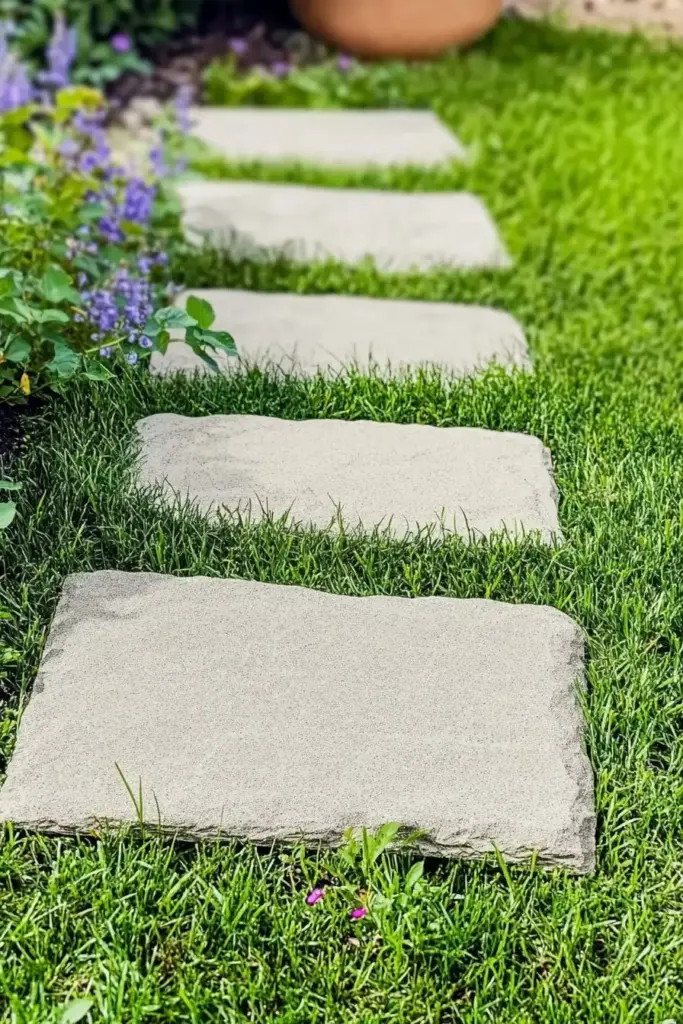
For a lush, eco-friendly twist on traditional flagstone path ideas, consider flagstone with ground cover. This design softens the hardscape with living plants that grow between the stones, creating a naturally integrated and visually pleasing walkway.
Ground covers like creeping thyme, moss, dichondra, or Irish moss work beautifully with flagstone. These low-growing plants not only fill the gaps with color and texture but also help prevent weed growth and erosion. Plus, many are drought-tolerant and can handle light foot traffic, making them both attractive and practical.
Why It Works:
- Natural Integration: Blends the path seamlessly into your garden.
- Eco-Friendly: Supports local pollinators and reduces runoff.
- Soothing Texture: Offers a soft, inviting feel underfoot.
Planting Tips:
- Space flagstones 2–4 inches apart to give plants room to spread.
- Choose ground covers that suit your light and climate conditions.
- Water regularly during the first few weeks until plants are established.
This style is ideal for homeowners who want to embrace nature at every step—literally. The combination of stone and greenery delivers an effortlessly beautiful garden path that evolves with the seasons.
Conclusion
Flagstone path ideas offer endless possibilities for transforming your outdoor space into something both beautiful and functional. From elegant formal layouts to artistic mosaic touches and eco-conscious ground cover pathways, there’s a style for every garden and homeowner. Whether you’re aiming to add structure to a modern front yard landscape or infuse charm into a relaxed, rustic design, flagstone delivers the versatility and durability to bring your vision to life.
By selecting the right layout and pairing it with materials like gravel, brick, or greenery, you can craft a walkway that elevates not only your garden but your entire backyard landscaping experience.
FAQ
What is the best base for a flagstone path?
A stable base is essential for a long-lasting flagstone path. Most professionals recommend a compacted gravel base topped with a thin layer of sand. This combination provides proper drainage and keeps the stones in place.
Can I lay flagstone directly on soil?
While it’s possible for low-traffic areas, laying flagstone directly on soil isn’t ideal. Without a stable base, stones may shift, sink, or become uneven over time. For best results, use gravel and sand layers beneath the stones.
What plants work best between flagstones?
Ground cover plants like creeping thyme, Irish moss, dichondra, and blue star creeper are great choices. They’re low-maintenance, tolerate foot traffic, and add lush greenery between stones.
Is flagstone slippery when wet?
Most natural flagstone has a slightly rough texture that provides good traction. However, some types—like polished or very smooth stones—can become slippery. Choose textured varieties and avoid using them on steep slopes.

